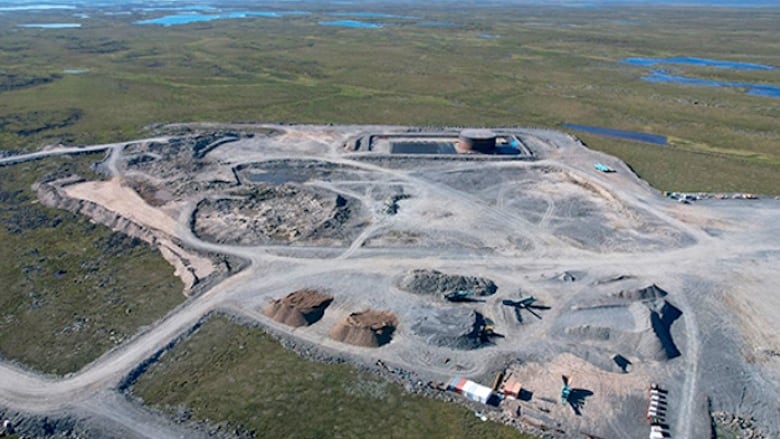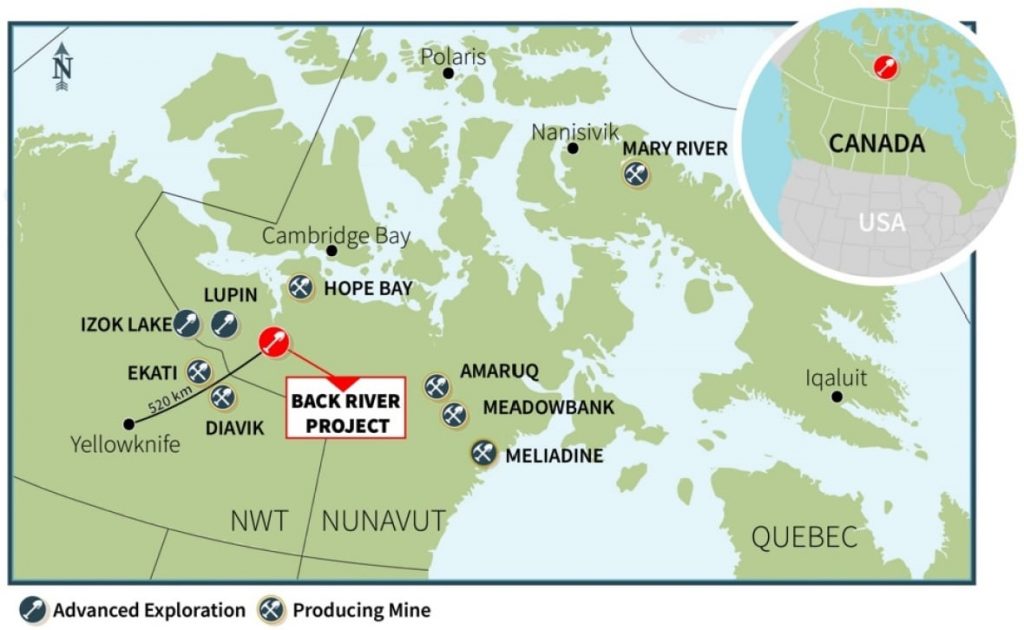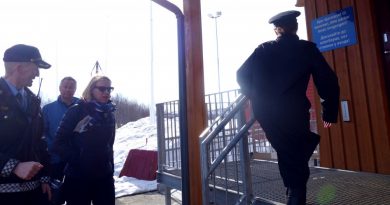Sabina says yes to building a gold mine in western Nunavut

Nunavut is set to see a third operating gold mine in 2025 with Sabina Gold and Silver Corp.’s recent decision to move ahead on building its Goose gold mine.
Sabina’s CEO and president, Bruce McLeod, called the Sept. 7 construction announcement “a milestone decision for the company,” adding it was exciting “to formally commit to becoming a significant Canadian gold producer.”
The Goose mine is located about 400 kilometres south of Cambridge Bay and lies 172 kilometres away from Sabina’s marine laydown facility in Bathurst Inlet.
By the first quarter of 2025, the company aims for Goose to become the territory’s third operating gold mine, joining Agnico Eagle’s two gold mines in the Kivalliq region.
Planning is key for isolated mine project
The Goose gold mine project’s challenge is its remoteness and logistics, McLeod said.
Construction of the mine facility is set to start in the first quarter of 2023.
“This has also been an opportunity for us, as we have had to start to plan and procure early to ensure that logistics run smoothly and do not delay the project,” he said.
“If we had not spent so much time and effort in preparing for construction, we would have been far more uneasy about making a construction decision.”
McLeod said that as early as 2020, the company started identifying materials and suppliers, issuing purchase orders and getting materials and equipment up to the site.

All major items for construction have been procured, including a 24-megawatt power plant, cranes and major construction support equipment, a water and sewage treatment plant, most process plant components and a permanent accommodation complex.
“In addition, we have been advancing early earth works prior to a construction decision. So when we made the decision this month, we had already blasted and laid the foundation for the plant site, the accommodation complex, the laydown area, the fuel storage area and the truck shop area,” McLeod said.
Sabina is more advanced than many other southern projects at this stage, he said.
“This has mitigated exposure to inflation and supply chain issues,” he said. “At this stage, we believe we have raised enough funds to build the project as was contemplated in the feasibility study.”
That study said Sabina had to raise $800 million in project financing, of which $610 million would go to build the mine.
Investors in the Goose project include China’s fourth largest gold producer, Zhaojin International Mining Co. Ltd.
Goose mine will mean jobs for Inuit
Tom Hoefer, president of the N.W.T and Nunavut Chamber of Mines, said Sabina has been “methodical in advancing preparations for construction, including logistics in our challenging North.”
“They now say they have protected themselves from inflationary and supply chain impacts, and are sufficiently funded for construction,” Hoefer said. “That’s good for the project.”
It’s a project Nunavut needs as a new generation of people seeks work, he said.
Sabina has already boosted its workforce from 30 in March to 142.
This week, Sabina posted a job posting in the Kitikmeot region for a heavy equipment operator willing to work on the Goose mine construction.
The project has received all major regulatory permits and authorizations for its eventual construction and operation.
Sabina has already signed a 20-year renewable land use agreement with the Kitikmeot Inuit Association (KIA).
It has also signed an agreement that provides Inuit in the Kitikmeot region with financial and socio-economic benefits.
These include training, jobs, share ownership in Sabina and a one per cent net smelter royalty on future production.
KIA president Stanley Anablak, in board meetings this week, was not immediately available for comment.
McLeod said Sabina is “very fortunate to have developed what we believe are mutually beneficial relationships” with the KIA.
Alternate energy plans
Sabina has also submitted a regulatory package to the Nunavut Planning Commission and the Nunavut Impact Review Board focused on the advancement of the Back River Alternate Energy Centre.
This proposal could allow Sabina to install up to 13 wind turbines, a solar panel array and a battery storage system.
If approved and constructed, the centre would significantly reduce the project’s greenhouse gas emissions, reduce traffic on the winter ice road and cut the shipping of fuel, Sabina said in a news release.
Related stories from around the North :
Canada: Baffinland promotes proposed production increase at Nunavut regulator meeting, CBC News
Russia: New mining project sets sights on Chukotka in Russia’s eastern Arctic, The Independent Barents Observer
United States: Companies announce investment in major Alaska oil project, The Associated Press


